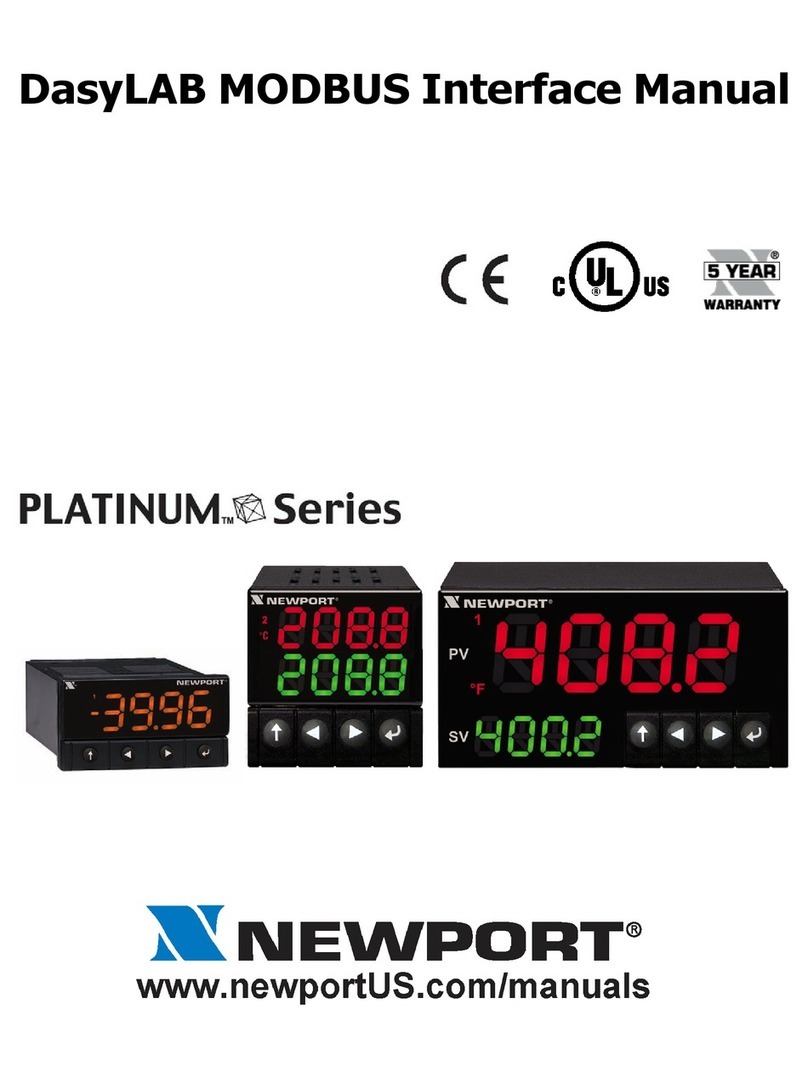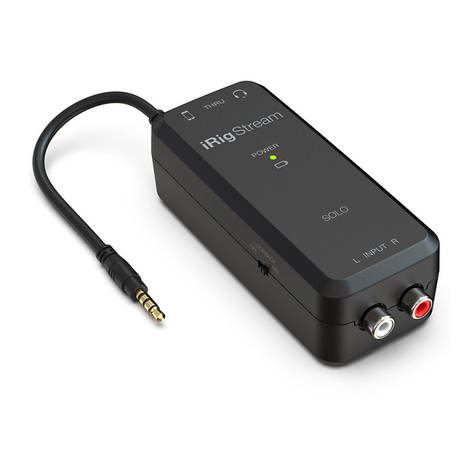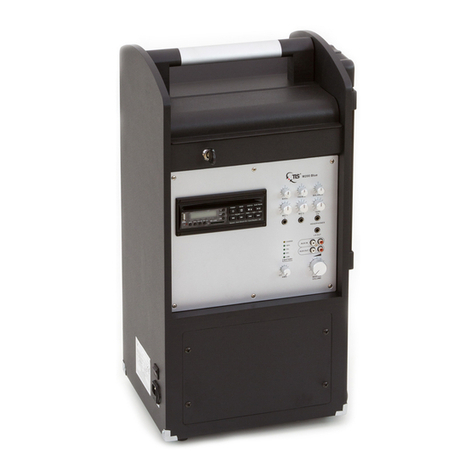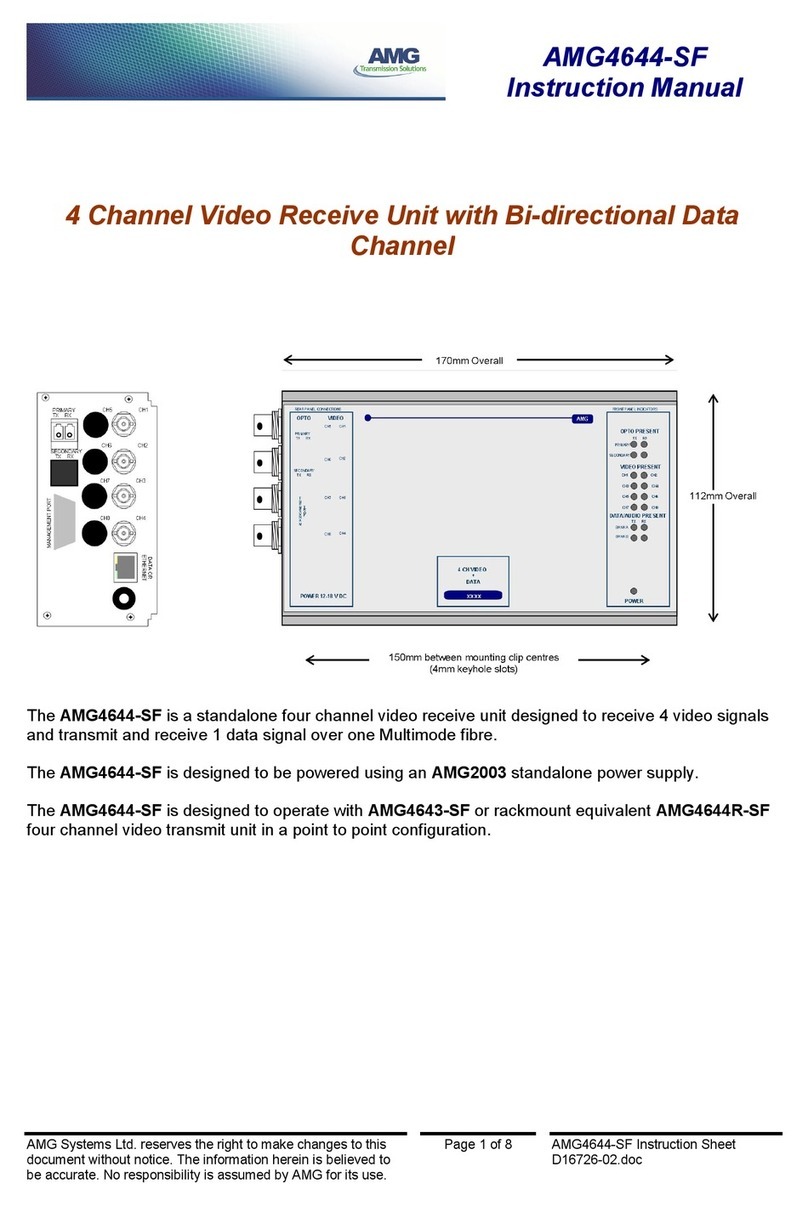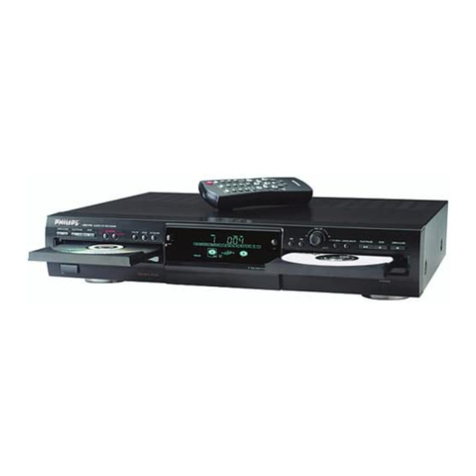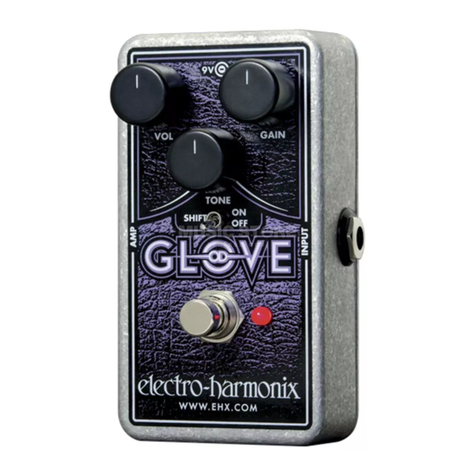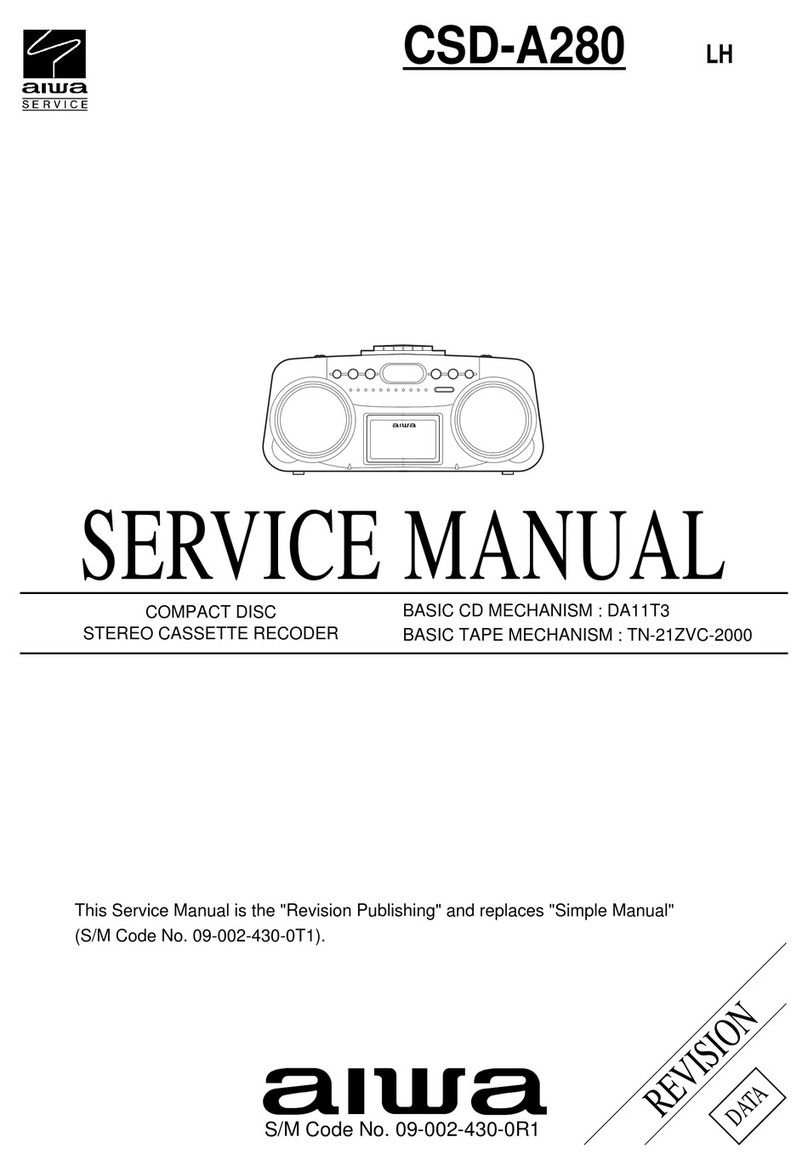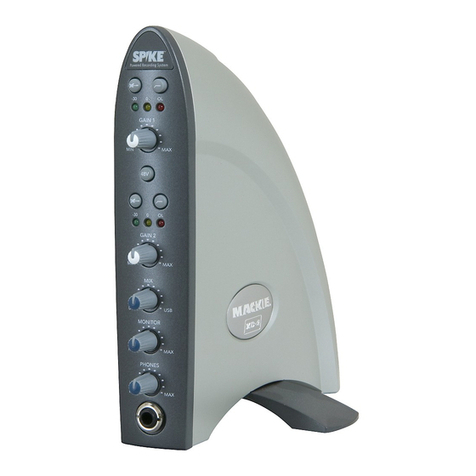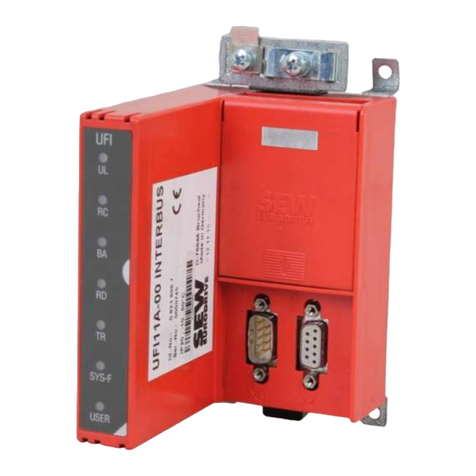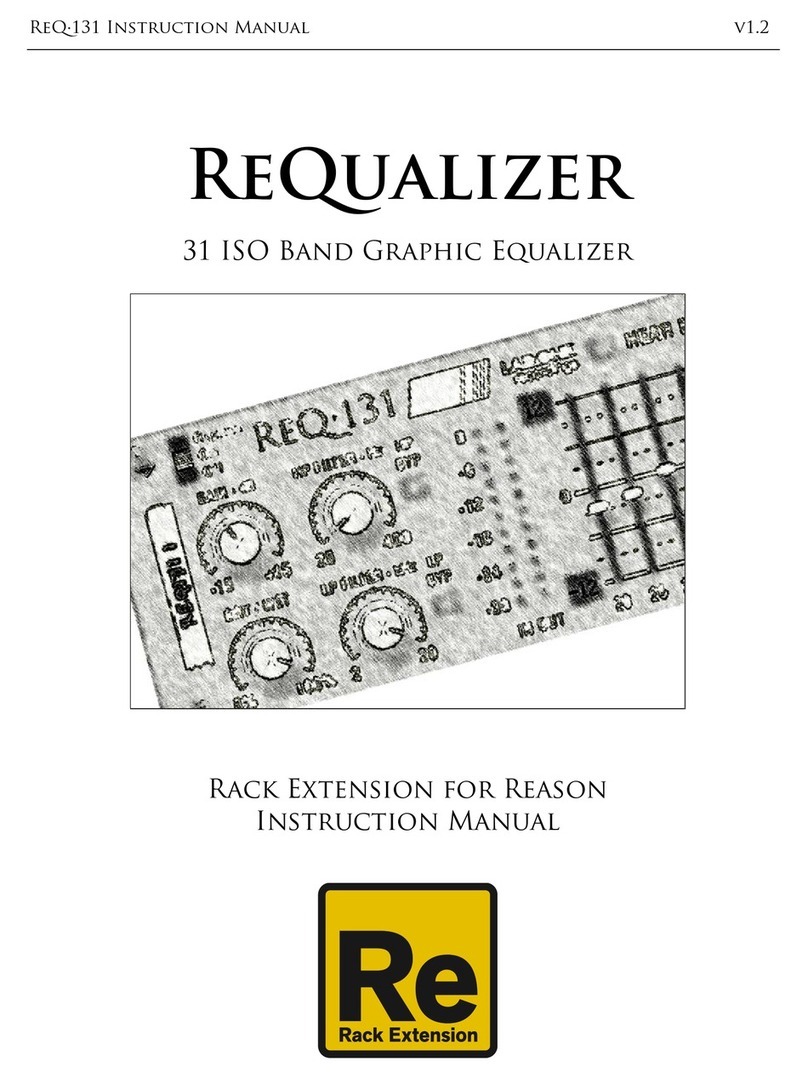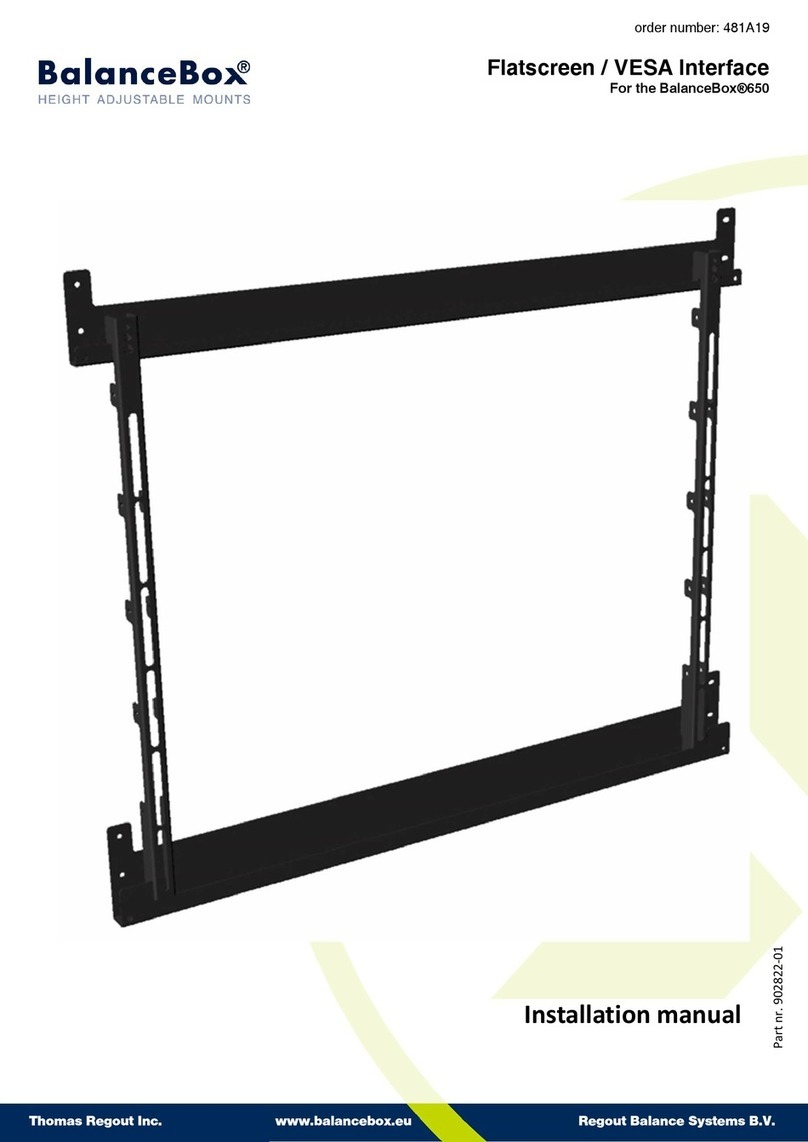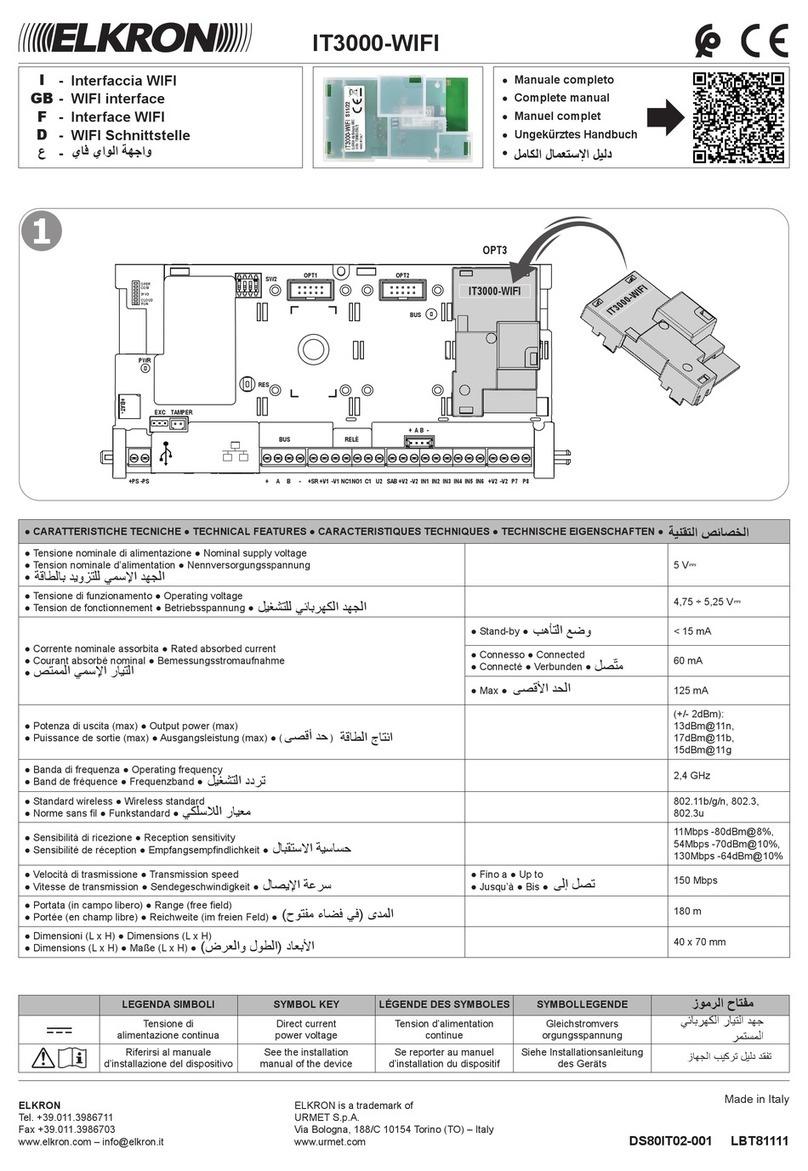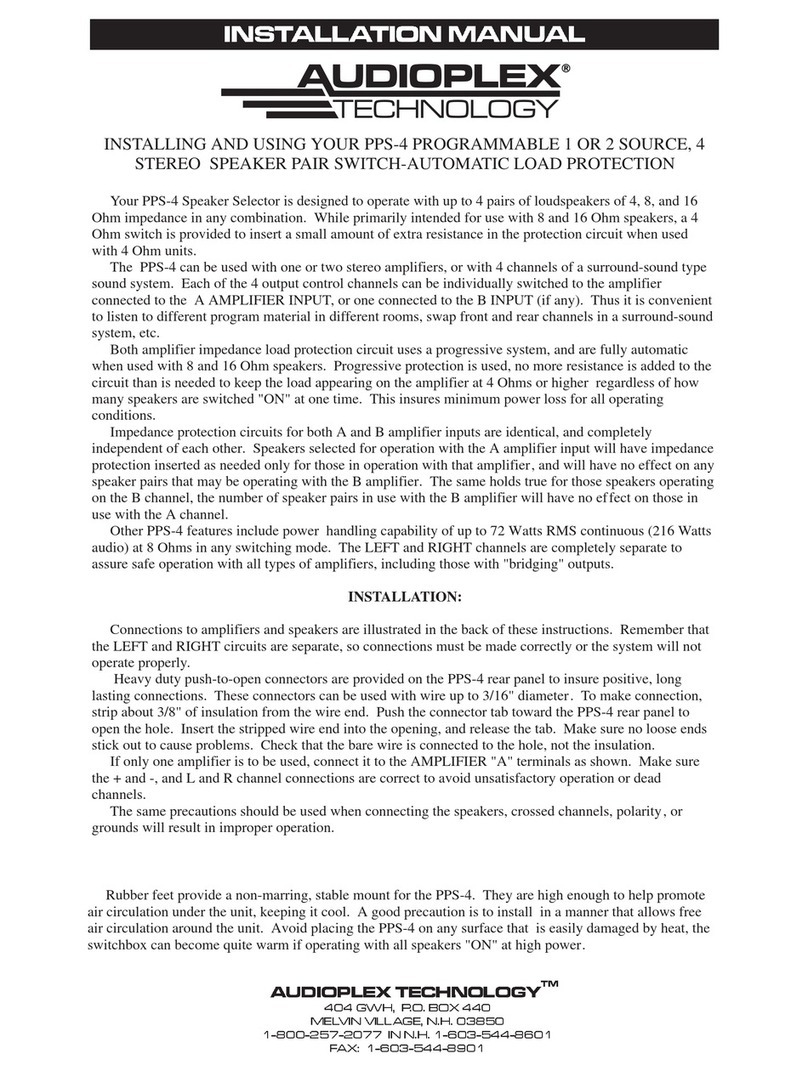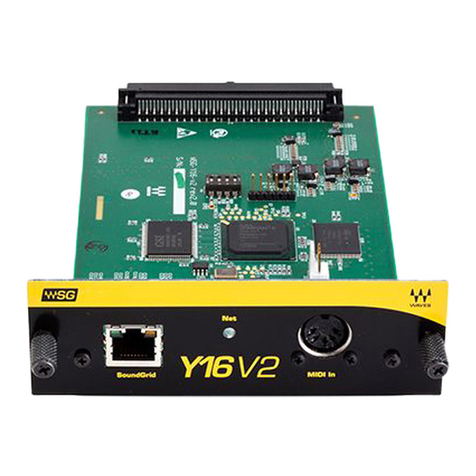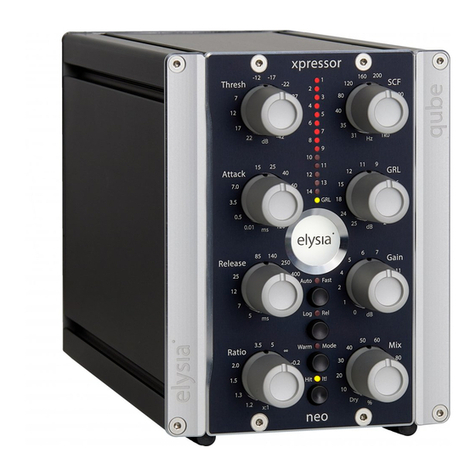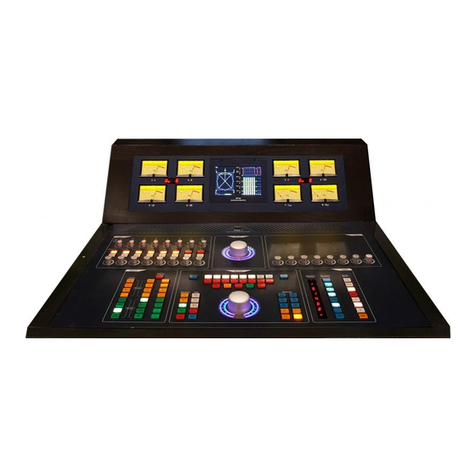Newport MM2000 User manual

-~
ARTISAN
®
~I
TECHNOLOGY
GROUP
Your definitive source
for
quality
pre-owned
equipment.
Artisan Technology
Group
Full-service,
independent
repair
center
with
experienced
engineers
and
technicians
on staff.
We
buy
your
excess,
underutilized,
and
idle
equipment
along
with
credit
for
buybacks
and
trade-ins
.
Custom
engineering
so
your
equipment
works
exactly as
you
specify.
•
Critical
and
expedited
services
•
Leasing
/
Rentals/
Demos
• In
stock/
Ready-to-ship
•
!TAR-certified
secure
asset
solutions
Expert
team
ITrust
guarantee
I
100%
satisfaction
All
tr
ademarks,
br
a
nd
names, a
nd
br
a
nd
s a
pp
earing here
in
are
th
e property of
th
e
ir
r
es
pecti
ve
ow
ner
s.
Find the Newport / Klinger MM2000 at our website: Click HERE

O
PERATOR
’
S
M
ANUAL
DC Interface Box
for use with
MM2000 Motion Controller/Driver
ESP6000 Motion Controller/Driver
Artisan Technology Group - Quality Instrumentation ... Guaranteed | (888) 88-SOURCE | www.artisantg.com

DC Interface Box
for use with
MM2000 Motion Controller/Driver
ESP6000 Motion Controller/Driver
Artisan Technology Group - Quality Instrumentation ... Guaranteed | (888) 88-SOURCE | www.artisantg.com

ii
Warranty
Newport Corporation warrants this product to be free from defects in
material and workmanship for a period of one year from the date of ship-
ment. If found to be defective during the warranty period, the product will
either be repaired or replaced at Newport’s option.
To exercise this warranty, write or call your local Newport office or repre-
sentative, or contact Newport headquarters in Irvine, California. You will
be given prompt assistance and return instructions. Send the instrument,
transportation prepaid, to the indicated service facility. Repairs will be
made and the instrument returned, transportation prepaid. Repaired
products are warranted for the balance of the original warranty period, or
at least 90 days.
Limitation of Warranty
This warranty does not apply to defects resulting from modification or
misuse of any product or part. This warranty also does not apply to fuses,
batteries, or damage from battery leakage.
This warranty is in lieu of all other warranties, expressed or implied,
including any implied warranty of merchantability or fitness for a particular
use. Newport Corporation shall not be liable for any indirect, special, or
consequential damages.
First Printing May, 1998
Copyright 1998 by Newport Corporation, Irvine, CA. All rights reserved.
No part of this manual may be reproduced or copied without the prior
written approval of Newport Corporation.
This manual has been provided for information only and product specifi-
cations are subject to change without notice. Any changes will be reflected
in future printings.
© 1998 Newport Corporation
1791 Deere Avenue
Irvine, CA 92606
(949) 863-3144
P/N 25564-01, Rev.E
IN-04981(01-00)
Artisan Technology Group - Quality Instrumentation ... Guaranteed | (888) 88-SOURCE | www.artisantg.com

iii
Table of Contents
Section Title Page
Warranty ............................................................................................................ii
List of Figures ..................................................................................................iv
List of Tables....................................................................................................iv
Section 1 — Introduction and Overview ......................................1-1
1.1 Description Summary - DC Interface Box ..........................................1-1
1.2 Motor Power Requirements ................................................................1-3
1.3 Description of Panel Functions on DCIB ............................................1-4
1.4 DCIB DC Module Specifications ..........................................................1-6
1.5 Application for MM2000 and ESP6000 Motion Controllers..............1-6
1.6 General Safety Considerations ............................................................1-8
Section 2 — Installation ..........................................................................2-1
2.1 Connecting the DCIB to MM2000 or ESP6000 Motion Controllers..2-1
2.2 Installing the DCIB DC Module inside the DCIB ................................2-2
Section 3 — Connector PIN Assignments ......................................3-1
3.1 Connector Pin Assignments for DCIB ................................................3-1
3.2 Connector Pin Assignments for MM2000 Motion Controller ..........3-2
3.3 Connector Pin Assignments for ESP6000 Motion Controller ..........3-5
Section 4 — Maintenance and Repair ............................................4-1
4.1 Maintenance ..........................................................................................4-1
4.2 Obtaining Service ..................................................................................4-3
4.3 Recommended Long-Term Maintenance (Service Contract) ..........4-3
4.4 Service Form ..........................................................................................4-7
Artisan Technology Group - Quality Instrumentation ... Guaranteed | (888) 88-SOURCE | www.artisantg.com

iv
List of Figures
Figure No. Title Page
1-1 DCIB Configuration with MM2000 Controller Card................................1-1
1-2 DCIB Configuration with ESP6000 Controller Card................................1-1
1-3 PWR2 - AC Powered ..................................................................................1-5
1-4 PWR2 - DC Powered ..................................................................................1-5
2-1 View inside the DC Interface Box ............................................................2-1
2-2 Installation View of Jumpers inside the DCIB ........................................2-3
2-3 View of DCIB DC Module ..........................................................................2-5
List of Tables
Table No. Title Page
1-1 Settings for an eight-position rotary switch ..........................................1-6
2-1 Jumper and Switch Settings......................................................................2-4
3-1 AUX Connector Pin Outs (15-pin connector) ........................................3-1
3-2 Pinouts for DCIB (J1 - 25-Pin Connector Pinouts) ................................3-1
3-3 Pinouts for MM2000 Motion Controller (J3 - 68-Pin
Connector Pinouts)....................................................................................3-2
3-4 Motor/Driver Interface (100-to-68 Pin) Cable to Connector Pinouts
(ESP6000 Motion Controller)....................................................................3-5
4-1 Trouble-Shooting Guide ............................................................................4-2
4-2 Technical Customer Support Contacts ..................................................4-3
Artisan Technology Group - Quality Instrumentation ... Guaranteed | (888) 88-SOURCE | www.artisantg.com

Section 1 — Introduction and Overview
1.1 Description Summary — DC Interface Box
Figure 1-1: DCIB Configuration with MM2000 Controller Card
Figure 1-2: DCIB Configuration with ESP6000 Controller Card
Section 1 — Introduction and Overview 1-1
DC Interface Box68-pin Connector
68-pin Connector
MM2000 Controller Card
DC Interface Box
68-pin Connector
100-pin Connector
ESP6000 Controller Card
Artisan Technology Group - Quality Instrumentation ... Guaranteed | (888) 88-SOURCE | www.artisantg.com

1-2
1. Used with small DC Motors
In the current configuration, the DC Interface Box is intended to be used
primarily with small DC motors. The motors could be driven directly by
the modules of the MM2000 Motion Controller, or by the DC Module of the
DC Interface Box. Due to the power supply constrains of the typical PC,
the applications with the MM2000, are limited to only two actuators mov-
ing at a time. With the DCIB DC Module(s), four actuators can be moving
at a time.
Motor OFF Feature
An important feature of the DC Interface Box is the support for the manual
position-adjusting knob. This knob, present on the 850F actuator, needs an
open motor circuitry in order to operate with the minimum resistance.
The function is implemented with one relay for each axis, controlled by
the MM2000 board through the user I/O lines, or ESP6000 board through
the Amplifier Enable Output lines.
For MM2000 Only:
Due to the limited number of I/O lines, three modes of relay control are
available to allow the user to select the configuration that best fits his
application. A bank of four jumpers selects which I/O line, if any, will be
used to activate the open-motor relay.
Each axis jumper could set one of the following modes:
• jumpers on the right (as shown in the chart above) : The same I/O line
controls all relays, number 7. (factory default setting)
• jumpers on the left: Each relay is controlled by a different I/O line; in
this case the relays for axis number 1, 2, 3 and 4 are controlled by the
I/O bits number 4, 5, 6 and 7, respectively.
• jumpers missing: The relays are always closed and the I/O lines are
available for general-purpose interface.
NOTE
The three different modes of operation can be mixed on the four axes.
I/O 7
I/O 6
I/O 5
I/O 4
I/O 7
…………Axis #4
…………Axis #3
…………Axis #2
…………Axis #1
Artisan Technology Group - Quality Instrumentation ... Guaranteed | (888) 88-SOURCE | www.artisantg.com

Section 1 — Introduction and Overview 1-3
NOTE
Once an I/O line is selected to control an open-motor relay, it cannot be
used for general-purpose interface.
NOTE
If the interface box is used with MM2000 firmware version 1.4 or earli-
er, the I/O bits must be toggled manually through the use of the BO, CB
and SB commands. A high bit turns the motors off.
For ESP6000 Only:
This information is the same as MM2000, with the following exceptions:
• I/O’s 4, 5, 6, and 7 are performed by Amplifier Enable Output lines of
their respective axes. Jumpers have the same function of enabling and
disabling the operation of the Amplifier.
2. Used as a Pass-Through Box
When used as a pass-through box with a driver unit (MD4 or similar), the
DC Interface Box fans out the command and feedback signals to one auxil-
iary and four axis interface connectors. To eliminate the possibility of
unwanted motor movement during the controller’s power ON/OFF cycles,
special circuitry monitors all voltages and disables the command signals
to the driver during all power transactions.
1.2 Motor Power Requirements
DC Module of the MM2000 has a built-in amplifier capable of driving small
DC motors up to 200 mA.
Due to power supply constraints of the typical PC, the applications with
the MM2000, are limited to only two actuators moving at a time. The DCIB
DC Module is capable of driving small DC motors up to 400 mA.
If increased power requirements are needed by the user, or to avoid draw-
ing power from the PC power supply, the user can drive the system using
the Universal Interface Box with plug-in DC Modules.
When DC Modules are used, an external power source is always required.
The DCIB has a built-in low voltage power supply, which has advanced
voltage monitoring capabilities.
Artisan Technology Group - Quality Instrumentation ... Guaranteed | (888) 88-SOURCE | www.artisantg.com

1-4
If voltage is between 12 -19V, the relay will close and NORMAL (Green) LED
will illuminate.
If voltage is under 12 volts, relay will open and LOW (Red) LED will illuminate.
If voltage is over 19 volts, relay will open and HIGH (Red) LED will illuminate.
Summary: The DCIB DC Module is NOT operating if the Green LED is not
illuminated!
1.3 Description of Panel Functions on DCIB
Front Panel:
The Front Panel of the DCIB includes the following items, reading left to
right:
AUX This is a 15-Pin Connector that gives access to the I/O bits
or, with simple modifications on the board, to the encoder
or pulse train signals. (See Pinouts in Section 3 of this
manual).
Main This is a 68-Pin Connector used for an Interconnect Cable
Connector link, from the MotionMaster2000 or ESP6000 motherboard
to the DCIB (See Pinouts in Section 3 of this manual).
LED’s External Power Voltage status is indicated by three Light
Emitting Diodes (LED): LOW, NORMAL, and HIGH.
• LOW (Red) - This LED is for LOW Power Voltage, and is
illuminated when DCIB power is on.
• NORMAL (Green) - This LED is for NORMAL Power
Voltage.
• HIGH (Red) - This LED is for HIGH Power Voltage.
PWR 1 This is an external power supply connector to be used
when a DC driver module is present.
Transformer
(Power Source)
A
Rectifier
DC
AC
PWR Relay
UIB
Amplifier
A = Electronic circuitry is monitoring this point.
Artisan Technology Group - Quality Instrumentation ... Guaranteed | (888) 88-SOURCE | www.artisantg.com

Section 1 — Introduction and Overview 1-5
PWR 2 This secondary power connector can be powered by a
transformer with a center tap, or by an external dual volt-
age power supply (See Figure 1-3).
Figure 1-3: PWR2 AC Powered
Figure 1-4: PWR2 - DC Powered
NOTE
Polarity Orientation not important!
Recommended transformer to be used with the DCIB:
• AC-AC Wall Mount Adapter with the following specifications:
12VAC at 2 amps (To be connected to PWR1 on the front panel of the
DCIB). An AC – AC wall mount adapter (P/N 22588-01 for 110V line) is
included if at least one driver module is installed.
Rear Panel:
The four (4) connectors on the rear panel are labeled: AXIS 1, AXIS 2, AXIS
3, and AXIS 4. These connectors are used for connections to DC Servo
Motors, or MD4 Driver.
Line
Safety
Fused
DC
Power
Supply
+15V
0V
–15V
PWR2
Line
Safety
Fused
12V
PWR2
12V
Artisan Technology Group - Quality Instrumentation ... Guaranteed | (888) 88-SOURCE | www.artisantg.com

1-6
1.4 DCIB DC Module Specifications
The DCIB DC Module is a low power DC motor driver designed to work
with the DC Interface Box. Its main specifications are:
• Drives both 12V and 24V DC motors. Voltage is selectable via a jumper.
• Drives DC motors up to 400mA.
• Capable to generate limit switch signals or limits the motor current
when motor current exceeds a preset value. Mode of operation is selec-
table with a jumper. When the jumper is missing, both functions are
disabled.
• The current setting for both modes of operation is done with an eight
position rotary switch, having the following settings:
Table 1-1: Settings for an eight position rotary switch
Position Current Limit/Trigger
0 Disabled
1 400 mA
2 200 mA
3 133 mA
4 100 mA
5 80 mA
6 66 mA
7 57 mA
1.5 Application for MM2000 and ESP6000 Motion Controllers
Introduction - MM2000 Motion Controller
The MotionMaster 2000 is an advanced motion controller which plugs
directly into any IBM PC / XT / AT and compatible computers. This
includes computers with 8088, 80286, 80386, and 80486 microprocessors,
and which are not PS/2 model types. In addition to the PC-bus interface,
the unit includes a full duplex RS-232-C serial interface and supports an
optional IEEE-488 interface. Using “piggy-back” plug-in modules, one (1)
MotionMaster 2000 main-board supports up to four (4) axes of motion
consisting of any combination of stepping, or brush DC servo motors.
The hardware that comprises the MotionMaster 2000 system is:
1. A motherboard that plugs into an expansion slot of an IBM PC / XT /
AT and compatible computers.
2. A stepping motor module that plugs onto the motherboard and/or...
3. A DC motor or stepper motor module that plugs onto the mother-
board.
Artisan Technology Group - Quality Instrumentation ... Guaranteed | (888) 88-SOURCE | www.artisantg.com

Section 1 — Introduction and Overview 1-7
Description - MM2000 Motion Controller
The MotionMaster 2000 is “state-of-the-art” technology with two 16-bit
microcontrollers and sophisticated internal software to achieve high-
speed intelligent positioning. Its capabilities range from simple point to
point positioning to elaborate tasks which require multiaxis coordination
and velocity and position change ‘on the fly’.
The MM2000 is command driven. With a host computer, the user sends
commands that direct it to carry out typical operations in a motion con-
trol system. For example, included in its command set, there are com-
mands which tell the MM2000 the distance, the direction, the speed, and
the acceleration of the next move, and which direct it to send system sta-
tus information, typically the position as the move progresses, whether
the move is complete or in progress, and whether an error has occurred.
The MM2000 can be set up to interrupt the users host computer when a
move is complete or any error or unexpected event occurs. This will great-
ly improve the user’s execution speeds and processing power because
their host computer is free to execute other tasks during a typical move
and still know exactly when the move is complete...so that the next one
can be initiated, for example.
The MM2000 provides 25,000 bytes of non-volatile memory for
program/parameter storage. Sophisticated motions control programs with
“IF...THEN” and “WHILE ... WEND” statements, which test the logical levels
of 8 I/O bits, can be created. Also system configurations and options such
as velocity, acceleration, software limits, and PID compensation parame-
ters are retained during power off and automatically reloaded at power on.
The MM2000 features encoder counting circuitry and commands that
enable the user to read the position of the system at any instant of time.
The encoder required is an incremental encoder with TTL compatible
quadrature outputs.
The MM2000 can be directed to find a home position defined by either the
location of a switch or the position where its internal position counter is
zero. It also monitors plus and minus direction limits inputs to protect the
user’s system from damage.
The MM2000 features an elaborate command interpreter and system moni-
tor. Every command received is analyzed for the correct format. If the
command format is incorrect, the MM2000 will not execute the command
and will store a descriptive error message in its output buffer.
Description - ESP6000 Motion Controller
The Enhanced System Performance (ESP) architecture consists of the
ESP6000 controller card, UniDrive6000 universal motor driver, and ESP-
compatible stages. The ESP6000 controller card is designed for convenient
installation in the user’s own PC.
The ESP6000’s Windows-based setup utility provides a full range of func-
tions for configuring and operating from one to six axes.
The system is designed to operate with Newport Corporation’s ESP-com-
patible stages, but can be configured to function with other stages.
Artisan Technology Group - Quality Instrumentation ... Guaranteed | (888) 88-SOURCE | www.artisantg.com

1-8
The ESP6000 includes the following features:
• Combined data acquisition and motion control
• ‘Plug-and-play’ controller, driver, and stage setup
• Bench-top or rack-mount configuration for the UniDrive6000
• Configured for any combination of motor type (DC/stepper) or size
• Feed-forward servo algorithm for smooth and precise motion
• Multi-axis synchronization
• Powerful motion programming capabilities in Visual Basic/C, and
LabVIEW languages. Extensive set of Newport Corporation-provided
commands.
• User-selectable displacement units
1.6 General Safety Considerations
The following general safety precautions must be observed during all
phases of operation of this equipment. Failure to comply with these pre-
cautions violates safety standards of design, manufacture, and intended
use of equipment.
Disconnect or do not plug in the power cord in the following circum-
stances:
• If the power cord or any other attached cables are frayed or damaged.
• If the power plug or receptacle is damaged.
• If the unit is exposed to rain or excessive moisture, or liquids are
spilled on it.
• If the unit has been dropped or the case is damaged.
• If the user suspects service or repair is required.
To protect the equipment from damage and avoid hazardous situations,
follow these recommendations:
• Do NOT make modifications or parts substitutions.
• Return equipment to Newport Corporation for service and repair.
• Do not touch, directly or with other objects, live circuits inside the
unit.
• Do not operate the unit in an explosive atmosphere.
• Keep liquids away from unit.
• Do not expose equipment to excessive moisture (>90% humidity).
Artisan Technology Group - Quality Instrumentation ... Guaranteed | (888) 88-SOURCE | www.artisantg.com

Section 2 — Installation 2-1
Section 2 — Installation
Figure 2-1: View inside the DC Interface Box
2.1 Connecting the DCIB to MM2000 or ESP6000 Motion Controllers
Connect MM2000 to Motors and/or Drivers:
The motor control signals generated by the MM2000 appear at the 68-pin
output connector at the back of the user’s computer. With the MM2000 the
user received a DC Interface Box, which divides the 68 signals into 4 axes
of motor control.
Locate the enclosed 68-pin shielded cable, connect one end to the
MM2000 output connector, and connect the other end to the DC Interface
Box.
The user should connect the motors and motor drivers to the 25 pin out-
put connectors on the rear panel of the DCIB. The connectors are labeled
AXIS 1, AXIS 2, AXIS 3, and AXIS 4.
NOTE
See Section 3 of the MM2000 Quick Installation and Start Up Guide,
Revision 3.2, for hook-up instructions.
AUX PWR1 PWR2
Main Connector
Location
Artisan Technology Group - Quality Instrumentation ... Guaranteed | (888) 88-SOURCE | www.artisantg.com

2-2
NOTE
For Start-up of the MM2000, see Quick Installation and Start Up Guide,
Revision 3.2, section 5.
Connect DCIB to ESP6000:
The ESP6000 controller card comes with a 100-to-100 or 100-to-68 pin inter-
face cables which connect the UniDrive and DC Interface Box (DCIB),
respectively.
1. Driver Interface (100-100 pin) Cable
The driver interface cable connects the ESP6000 controller card to the
UniDrive6000. Connector Pin Assignments are shown in Section 3 of
this User Manual.
2. Motor/Driver (100-68 pin) Cable
The motor/driver cable connects the ESP6000 controller card to the
DCIB. Connector Pin Assignments are shown in Section 3 of this User
manual.
2.2 Installing The DCIB DC Module Inside The DCIB
To install a DC Module driver in a DC Interface Box, execute the following
steps:
1. Turn power off to the MM2000 or ESP6000 and the DC Interface Box.
2. Disconnect all cables from the DC Interface Box.
3. Remove the top cover of the DC Interface Box by removing the four
screws, two in each side.
4. Remove the three jumpers that belong to the axes receiving the mod-
ule (Figure 2-2). The jumpers are located inside the larger rectangle
identifying the location of each axis module, clearly marked in silk-
screen.
5. If limit switch signals need to be generated from the current sensing
circuit, cut the limit switch traces for the desired axes on the DC
Interface Box as indicated in Figure 2-2 (See Table 2-1, D).
Artisan Technology Group - Quality Instrumentation ... Guaranteed | (888) 88-SOURCE | www.artisantg.com

Section 2 — Installation 2-3
Figure 2-2: Installation View of Jumpers inside the DCIB
6. Set the jumpers and current setting as needed (See Table 2-1, A, B, C,
and D) on the DC Module.
7. Insert the DC Module in the appropriate axis location. Observe the
three jumper headers on the DC Interface Box are also used as a key
for proper module location.
8. Place the DC Interface Box’s top cover back on the unit, and secure it
with the four screws.
9. The DC Interface Box is now ready to be reconnected and powered on.
NOTE
In order for a DC Module to be functional, an appropriate power supply
must be connected to the DC Interface Box.
Cut +LIMIT
and –LIMIT traces
between pads per
table D
Remove jumpers
Universal
Interface Board
Silk-screen
Axis #
+LIMIT
–LIMIT
Artisan Technology Group - Quality Instrumentation ... Guaranteed | (888) 88-SOURCE | www.artisantg.com

2-4
Table 2-1: Jumper and Switch Settings
Table A: JP1 Settings
Setting Description
12V Driver set for 12V motors
24V Driver set for 24V motors
Missing Driver disabled
Table B: JP2 Settings
Setting Description
LD Current sensing enabled to emulate limit switches
CL Current sensing enabled to limit the motor current
Missing Current sensing disabled
Table C: SW1 Settings
Position Current limit/trigger
0 Current sensing disabled
1 400 mA
2 200 mA
3 133 mA
4 100 mA
5 80 mA
6 66 mA
7 57 mA
Artisan Technology Group - Quality Instrumentation ... Guaranteed | (888) 88-SOURCE | www.artisantg.com

Section 2 — Installation 2-5
Table D: Settings for Specific Motors
Motor Type SW1 JP1 JP2 Cuts on main board
UE16CC 5 12V CL None
UE30CC 2 24V CL None
UE31CC 5 24V CL None
UE32CC 1 24V CL None
850G-HS, 3 24V CL None
850F(-HS)
850G, 850G-LS, 5 12V CL None
850F-LS
850B 4 12V LD -LIMIT and +LIMIT
850B-HS 3 12V LD -LIMIT and +LIMIT
850B-LS 5 12V LD -LIMIT and +LIMIT
495 3 12V CL None
496 2 12V CL None
850F, 3 12V CL None
CMA-xxCCCL
Figure 2-3: View of DCIB DC Module
DC Module
PCB Assembly
mounted
inside DCIB
Artisan Technology Group - Quality Instrumentation ... Guaranteed | (888) 88-SOURCE | www.artisantg.com

2-6
Notes
Artisan Technology Group - Quality Instrumentation ... Guaranteed | (888) 88-SOURCE | www.artisantg.com
Table of contents
Other Newport Recording Equipment manuals
